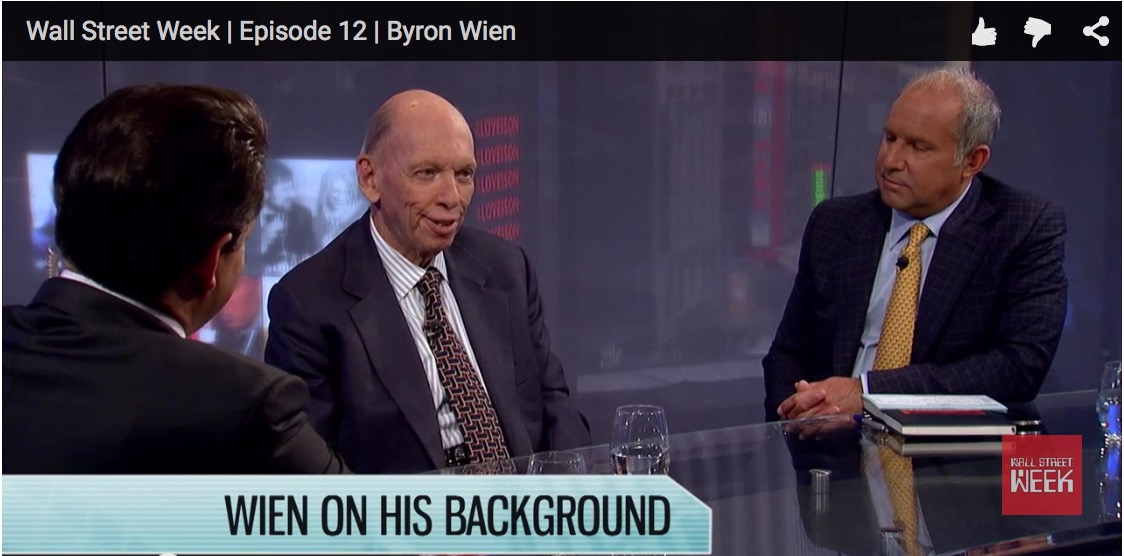WATCH NOW
In Episode 12 of Wall Street Week, Byron Wien talks about his use of technical analysis in making investment decisions, and how it helped to launch his legendary career on Wall Street. While technical analysis is often associated with day trading and a dirty word to many in the financial industry, Wien believes if used properly it can be a powerful decision-making tool.
Fundamental analysis
Fundamental analysis is a method of attempting to measure the intrinsic value of an asset. Fundamental investors assess factors like earnings, free cash flow, debt, growth rate, dividends and interest rates to determine fair value, which is then compared to the asset’s current price to determine whether it represents an attractive investment opportunity.
Fundamental analysts also analyze economic trends and weigh qualitative factors, such as product quality and management style, in an attempt to make future growth projections. Even though all analysts look at the same data, price targets may vary based on differences in the qualitative, forward-looking variables of fundamental analysis.
Technical analysis
Technical analysis, on the other hand, is a method of attempting to forecast future price of an asset based on historical data, especially relating to price and volume. Technical analysts eschew the fundamental notion of analyzing the underlying business, instead focusing on pattern recognition to construct seemingly favorable risk-reward scenarios.
In essence, technical traders believe fundamental factors are already baked into the price of an asset at any given time, and the only way to gain an edge is to look for favorable entry and exit points based on historical trends. Stock charts are used as the canvas on which technicians look to read and tell the story behind a stock’s movement.
How does technical analysis work?
Technical analysis can be simple or complex depending on the number of factors used in the process. Traders may choose to focus exclusively on price, or incorporate additional indicators such as moving averages, volume analysis and more.
Technicians either conduct automated screens for certain characteristics or peruse charts individually, looking to identify a certain patterns. Ultimately, technical analysts use a collection of indicators to measure factors relating to investor sentiment and behavioral psychology.
A core tenet of technical analysis is the importance of price levels. The two most important price levels are support and resistance. Support is a level below the current price where a stock has historically had difficulty trading below. Resistance is a level above the current price where a stock has historically had difficulty trading above.
A stock could have difficulty trading below support or above resistance, but if its price does breach those levels, the expectation is for additional momentum and the start of a new trend. The majority of technical analysis strategies seek to identify and exploit trends – uptrends, downtrends and sideways trends, which are defined by a series of lows and highs.
Technical analysts also study the volume of a stock, especially relative to corresponding moves in price. If a move in a stock is accompanied by above average volume, it is deemed to have greater significance. Large moves high on above average volume are known as accumulation days, as it appears investors are accumulating a large number of shares (a bullish sign). Large moves lower on above average volume are known as distribution days, as it appears investors could be selling shares back into the market (a bearish sign).
Technicians may use several different types of stocks charts, including line charts and bar charts, but most refer to candlestick charts. Candlestick charts create a more detailed story about the movement of a stock on a given time-frame. On a daily candlestick chart, for example, each candle represents one day, and has a body and a wick. The body of the candle represents the opening price and closing price, with the candle typically colored red for a down day and green for an up day. The wick on each candlestick then reflects the intra-day low and high of the stock. There are schools of highly complex candlestick pattern analysis, but generally candlesticks with long bodies are seen as more significant than those with long wicks, which represent indecision.
Moving averages are another popular tool of technical analysts, creating additional price levels for traders to measure the composure of a stock. Moving averages track the average price of a stock over a given time frame, and are reflected as lines on a chart. For example, a 200-day moving average would reflect the average price of a stock over the last 200 days. Stocks trading above moving averages are generally considered strong, while those trading below moving averages are considered weak. A flat moving average is indicative of a sideways trend, while upward/downward sloping moving averages are indicative of uptrends/downtrends.
As is the case with support and resistance, when a stock crosses above or below a moving average, it is deemed as a potential inflection point. The greater number of days in a moving average, the greater its significant to technical analysts. There are also two different types of moving averages: Simple Moving Averages (SMA), which give equal weighting to price on each day of the average, and Exponential Moving Averages (EMA), which give greater weighting to price on more recent days.
Technical analysts may also use more complex tools like Bollinger Bands, moving average convergence divergence (MACD), relative strength index and other oscillators and indicators.
The big picture: blending fundamental and technical analysis
While there are traders who exclusively operate using technical analysis, established investors who employ technical analysis typically use it in concert with fundamental analysis. While over-trading can adversely affect performance, technical analysis can also potentially help investors improve trade entries, exits and risk management.
In this week’s episode of Wall Street Week, Byron Wien talks about how he uses fundamental analysis and technical analysis to complement each other. For example, if he identifies a strong investment opportunity from a fundamental analysis, he will analyze technical signals in an attempt to buy at the lowest price and/or with the highest degree of confidence.
While technical analysis often associated with day traders, the majority of which dramatically underperform benchmarks, technical analysis can also be conducted on long-term time frames that ignore the short-term noise. Regarding risk management, important technical levels, rather than arbitrary drawdown percentages, can form the basis for stop-loss levels in long-term investments.
Copyright © Wall Street Week
















